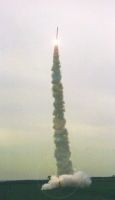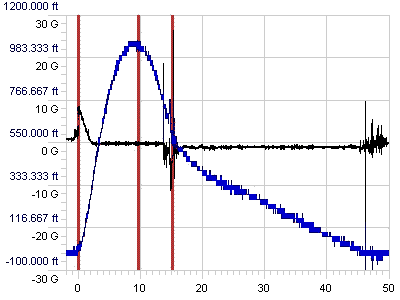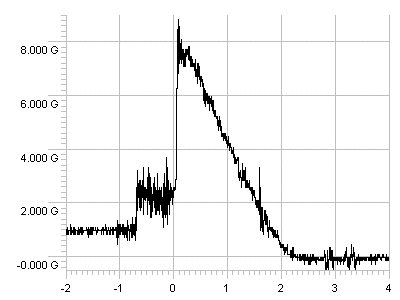R-DAS FLIGHT #1 DETAILS
Flight #: 1
Date: 4th of November, 1999
R-DAS firmware: 2.3
R-DAS Recorded Altitude: 1050 feet (G-Wiz LC Deluxe recorded altitude: 1116 feet - 66 feet difference / 5.91% difference)
Apogee - Charge Firing Delta-t: 0.8 seconds
Apogee - Charge Firing Delta-h: 0 feet (0 metres)
Descent Rate at Apogee Deployment: 0 feet per second (0 metres per second)
Total Time of Flight: 46 seconds
Apogee - Charge Firing h Variance: 0%
R-DAS Flight Mode: Recording only (charges fitted to evaluate RDAS performance)
Launch Vehicle Diameter: 6 inches
Launch Vehicle Length: 14 feet
Launch Vehicle Propulsion: Aerotech 2 x I-211W, 2 x I-161W, 2 x H-123W, 1 x J-570W
Fins: 3 clipped deltas (Aerofoiled)
Launch System: Rail Launch
Finish: Gloss smooth
Ejection Method: Black Sky Research Timer-2B (8 second delay)
|
 |  | | Comments The decision was made to use some new igniters rather than Copperhead igniters or Daveyfire igniters dipped in Firestar, as is normally the case in MARS. This was an error of judgement on our part. The motors did not all ignite simultaneously, hence the gradual thrust increase shown by the acceleration in the graph. The main motor, the J-570 then lit, enabling the vehicle to accelerate considerably faster. Another motor then airlit a second or so later into the ascent, causing the vehicle to deviate from the planned trajectory. The result was that the rocket was too low, and descending ballistically when the recovery system deployed. This resulted in the recovery tube section of the rocket zippering. |   The Deimos-2 STV rocket
before launch and after landing. |
 | | Thrust Section of Flight | |
|
 |
|
Tue, Dec 16, 2025, 10:35 GMT
(50)  6:57 6:57  16:33 16:33  88
% 88
% |
|
home - space - research - links - contact me - colophon
Richard Osborne - 1995-2006 |
|